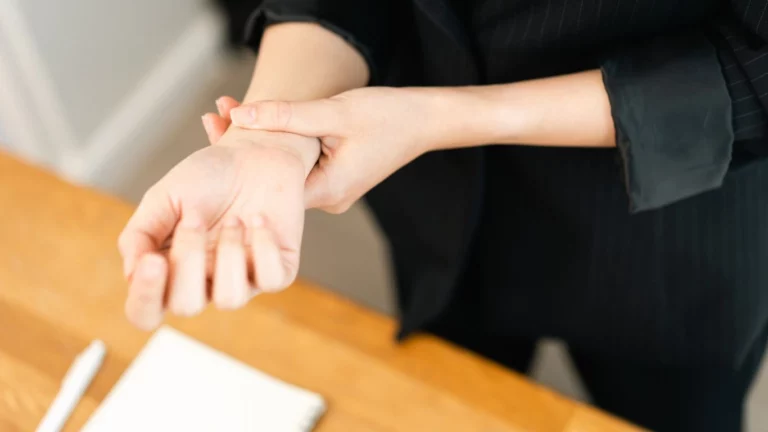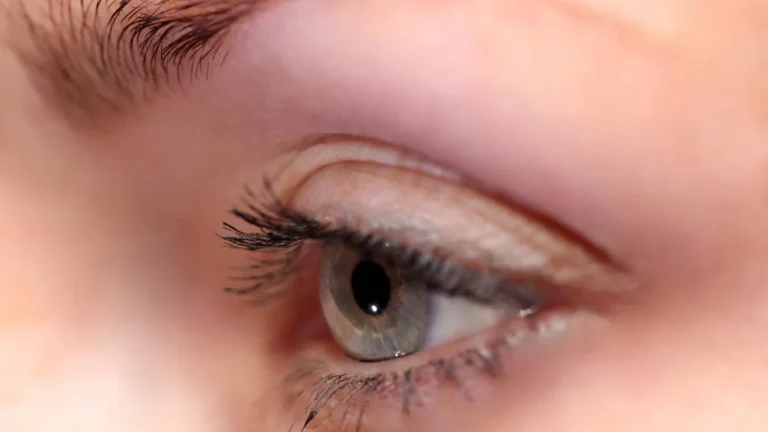Best GERD Friendly Restaurant Dinner Orders That Won’t Trigger You
If you’ve ever stared at a restaurant menu trying to figure out what won’t trigger your GERD symptoms, you’re not alone. As someone who has worked closely with patients managing acid reflux in a busy gastroenterology clinic, I know firsthand how frustrating—and let’s be honest, sometimes embarrassing—it can be to navigate dinner out. Choosing GERD friendly restaurant dinner orders doesn’t mean you have to settle for dry toast and water. With a little know-how and a few practical tricks, you can actually enjoy your meal without worrying about the aftermath.
Understanding the GERD-Friendly Mindset

Before we jump into what to order, it helps to quickly revisit what GERD actually is. Gastroesophageal reflux disease (aka GERD) is that super annoying condition where stomach acid decides to travel in the wrong direction—up your esophagus. Classic symptoms include heartburn, a sour taste in your mouth, and that weird throat discomfort that makes you feel like you’re wearing a turtleneck you can’t take off. Based on what I’ve seen with patients, trigger foods are often the usual suspects: spicy, acidic, fatty, and fried.
So the goal at a restaurant? Order smart to avoid the burn—literally.
Decoding Menus Like a Pro

Skip the Red Flags
Ever had a patient tell you they were “good all day” and then *bam*—heartburn city right after dinner out? It usually comes down to ingredients hiding in plain sight. Here are a few items I always tell patients (and honestly, myself!) to skip or question:
- Tomato-based sauces: Yeah, marinara sounds great until 2 a.m. rolls around.
- Citrus-heavy dressings or glazes: Lemon chicken can be a trap.
- Anything deep-fried or smothered in cheese: Tastes good going down, wreaks havoc later.
- Spicy dishes: Think jalapeño anything, buffalo sauces, or curry blends.
Ask Questions Without Feeling Awkward
I get it—no one wants to be “that person” at the table grilling the waiter like it’s an interrogation. But trust me, it’s better than being up all night. I usually phrase it casually: “Hey, is the chicken grilled or fried?” or “Does that sauce have tomatoes or cream in it?” Most staff are super accommodating, and you’d be surprised how many restaurants are used to dietary restrictions these days.
GERD Friendly Restaurant Dinner Orders That Won’t Disappoint

Plates That Actually Work
Alright, here’s the good stuff. These meal ideas have come up again and again in my conversations with patients—and yes, I’ve tried most of them myself during family dinners or date nights out:
- Grilled chicken or fish with steamed veggies: Ask for light seasoning and no butter. Pro tip: squeeze a little olive oil and fresh herbs instead of lemon.
- Rice or quinoa bowls (minus spicy toppings): Choose grilled protein, cucumbers, and a touch of avocado. Skip sriracha or creamy dressings.
- Baked potato with light toppings: Think plain Greek yogurt or grilled mushrooms instead of sour cream and bacon bits.
- Plain pasta with olive oil and grilled zucchini: Boring? Not when done right. Add a sprinkle of parmesan and herbs.
Sidekicks That Keep the Peace
You’d be surprised how much sides can make or break your meal. I usually tell patients to aim for:
- Steamed broccoli, carrots, or green beans
- Brown rice or plain couscous
- Salads without raw onions, tomatoes, or acidic dressings (ask for vinaigrette on the side)
Trust me, you’re not missing out by avoiding greasy fries. And your stomach will thank you—probably around midnight when you’re not pacing the hallway clutching antacids.
What I Tell My GERD Patients—And Do Myself
When I worked at the clinic, one of the most common questions I got from patients was, “What can I eat when I go out?” It was usually asked with a mix of hope and desperation. My go-to advice was: aim for simple, grilled, and non-acidic. And I’ll be honest, even after hours in scrubs, I’d head to a restaurant and follow the same rules for myself. Because there’s nothing worse than trying to wind down after a long day only to have acid reflux crash the party.
Smart Swaps That Save the Day

Let’s be real—most menus weren’t built with GERD in mind. But here’s where a little creative thinking goes a long way. Over the years, I’ve learned that simple swaps can turn a heartburn bomb into a gut-friendly meal. It’s kind of like playing menu Tetris. You just move the right pieces around.
Here are a few swaps I swear by, both from my experience helping patients and ordering for myself:
- Swap marinara for olive oil or pesto (without garlic): So many pasta dishes can be GERD-friendly with just this one switch.
- Swap fried proteins for grilled or baked: This one’s obvious but powerful. Grilled salmon instead of fried fish tacos? Way safer—and honestly tastier too.
- Swap citrusy or vinegar-heavy dressings for light oil-based vinaigrettes: Or go rogue like I do and ask for olive oil and herbs on the side.
- Swap spicy add-ons for fresh herbs or low-sodium seasonings: Basil, oregano, or even rosemary can bring the flavor without the burn.
At first, it might feel like a hassle to customize your plate. But after a few tries, it becomes second nature. You’ll know your triggers better than anyone, and that’s half the battle.
Tricky Foods That Pretend to Be GERD-Friendly

Here’s where it gets sneaky. Some meals *look* totally safe but can cause major reflux issues later. I’ve seen patients come in completely confused after a so-called “safe” dinner left them curled up on the couch with a heating pad on their chest.
These are the undercover culprits I warn people about:
- Mashed potatoes loaded with butter and cream: Sounds harmless, but the fat content is a reflux trigger waiting to happen.
- Soup, especially tomato-based or creamy versions: Even “light” soups at restaurants are often acidic or full of hidden fats.
- “Healthy” veggie wraps: These often sneak in raw onions, spicy hummus, or vinaigrettes that are acidic nightmares.
- Grilled meats with BBQ sauce: Most BBQ sauces are tomato-based and heavy on sugar—both GERD triggers.
One time, I ordered a grilled chicken wrap thinking I was being smart, only to realize halfway through it was doused in buffalo sauce. Lesson learned: always read the fine print (or ask before the sauce surprises you).
Choosing Restaurants That Just Get It

Okay, this one’s a biggie. Not all restaurants are created equal when it comes to making GERD-friendly adjustments. Based on what I’ve heard from patients (and from doing a bit of research myself), some spots just *get it*. They’re used to dietary requests and are happy to adjust the dish to your needs. Others? Not so much.
When choosing a restaurant, I usually look for these signs:
- Customizable menu options: Build-your-own bowls or pick-your-protein spots are great. You’re in control of what goes in your meal.
- Health-conscious or allergy-aware kitchens: If they cater to gluten-free, low-sodium, or vegetarian diets, chances are they’ll take GERD seriously too.
- Knowledgeable staff: If the server knows what “low acid” means or doesn’t blink when you ask about garlic or onions, that’s a good sign.
I had a great experience at a Mediterranean place once that had a build-your-own plate. I was able to get grilled chicken, plain rice, and sautéed greens with no seasoning—then added my own olive oil and herbs. No acid, no drama, and I actually left feeling full *and* functional.
Tips for GERD Dining Out That I Wish I Knew Sooner
When I think back to my first few GERD-related patient consults, I remember how overwhelmed people felt. Eating out should be a break from stress—not a trigger for it. So here are a few extra gems I’ve picked up along the way that I now share with almost everyone:
- Eat slowly: Rushing your meal is a sure-fire way to invite reflux. Chew, breathe, relax. Your stomach will thank you.
- Skip the breadbasket (or go easy): Especially if it’s garlic bread or comes with acidic dips.
- Stay upright for at least an hour after eating: No flopping on the couch or reclining in your car right after dinner. Seriously—this one makes a huge difference.
- Go for water, skip the soda and wine: I know it’s tough. But carbonation and alcohol are frequent GERD offenders. Sparkling water included, unfortunately.
And here’s something from my own life: I now carry antacids in my bag—not because I plan to need them, but because it takes the stress off knowing I have a backup. Kinda like carrying a charger for your phone. You don’t always use it, but when you need it, you’re glad it’s there.
GERD-Friendly Desserts That Won’t Sabotage Your Night

Let’s talk dessert—because just because you’re managing GERD doesn’t mean you have to skip the sweet stuff completely. I’ve had more than a few patients (and let’s be honest, me too) who tried to sneak in a chocolate lava cake thinking “just this once”… only to regret it hours later. That doesn’t mean dessert is totally off-limits—it just means we need to be strategic.
Here are some GERD friendly restaurant dinner order dessert tips I’ve picked up over time:
- Go fruity—but cautiously: Choose mild fruits like bananas, apples (peeled), or pears. Skip anything citrusy or berry-heavy. Apple slices with honey or baked pears can be delicious and safe.
- Choose light, non-dairy options: A simple scoop of non-dairy vanilla ice cream or a small sorbet (without lemon/lime) can hit the spot without hitting your esophagus.
- Avoid chocolate and mint: I know. This one stings. But they both relax the lower esophageal sphincter—aka the muscle that keeps acid where it belongs.
Pro tip? I’ve learned to ask if a dessert can be “plain”—as in, “Can I get that apple tart without the caramel drizzle?” Most places are surprisingly chill about it.
How to Plan Ahead Without Overthinking It

One thing I wish more people knew? The key to enjoying eating out with GERD is to plan a little—just enough to stay confident, not paranoid. It’s something I’ve done instinctively ever since working in the gastro clinic. I’d watch patients stress over dinners out, and I’d always say, “You don’t have to avoid restaurants. You just have to prep smarter.”
Here’s what I suggest, based on what works in real life (and not just the textbook):
- Skim the menu online first: Most places post their full menu. I’ll check it out ahead of time, pick a couple of safe bets, and avoid the game-time stress of decision-making.
- Don’t go starving: Showing up to dinner ravenous often leads to overeating—which is bad news for reflux. I usually have a small, safe snack (like a banana or a few crackers) before I head out.
- Stick to portion control: Bigger meals = more acid production. If the portions are huge, split an entrée or ask for a to-go box upfront. You can always eat the rest later (upright, of course).
And honestly? Sometimes I just call ahead and ask what their GERD-safe options might be. It’s not awkward—it’s smart. Most places are actually happy to help when you’re clear and polite about your needs.
Helping Others Understand GERD Without the Eye Rolls
This one’s a little more personal. I’ve had patients, friends—even family—feel a little embarrassed talking about their dietary restrictions. But GERD is a real medical condition, not some picky preference. So let’s normalize asking for what we need at the table.
From my time as a Medical Assistant, I’ve seen how important it is for folks to feel empowered. I’ve had patients bring in their restaurant horror stories, laughing and venting, but also really struggling to feel heard. The truth is, educating the people around you (even your server) can go a long way in making dining out a better experience.
Here are a few tips I share often:
- Bring it up casually: “I have reflux, so I just have to avoid a few ingredients” is a quick, effective way to explain without turning it into a lecture.
- Stick to your boundaries: Don’t be pressured into “just trying” something you know will trigger symptoms. Your health > peer pressure.
- Celebrate wins: When you find a dish or restaurant that works well for you, make a note of it—or better yet, share it with others in your reflux circle.
You’d be surprised how many people are quietly dealing with the same thing and just need a little nudge to speak up too.
Final Thoughts on Owning Your GERD-Friendly Restaurant Experience
At the end of the day, eating out with GERD isn’t about deprivation—it’s about intention. It’s about knowing your body, asking the right questions, and not being afraid to tweak the menu. And if you’re anything like the patients I’ve worked with (or me, for that matter), you’ll find that confidence grows with every outing.
Remember, GERD doesn’t have to control your social life—or your plate. You’ve got the knowledge, the tools, and the experience to make dining out something you actually enjoy again. And if one night doesn’t go perfectly? That’s okay too. It’s a journey. One delicious, heartburn-free bite at a time.
References
Disclaimer
This article is based on personal experience and general knowledge gained while working in a gastroenterology clinic. It is not a substitute for medical advice. Always consult with a licensed healthcare provider regarding your specific condition and dietary needs.

Camellia Wulansari is a dedicated Medical Assistant at a local clinic and a passionate health writer at Healthusias.com. With years of hands-on experience in patient care and a deep interest in preventive medicine, she bridges the gap between clinical knowledge and accessible health information. Camellia specializes in writing about digestive health, chronic conditions like GERD and hypertension, respiratory issues, and autoimmune diseases, aiming to empower readers with practical, easy-to-understand insights. When she’s not assisting patients or writing, you’ll find her enjoying quiet mornings with coffee and a medical journal in hand—or jamming to her favorite metal band, Lamb of God.





